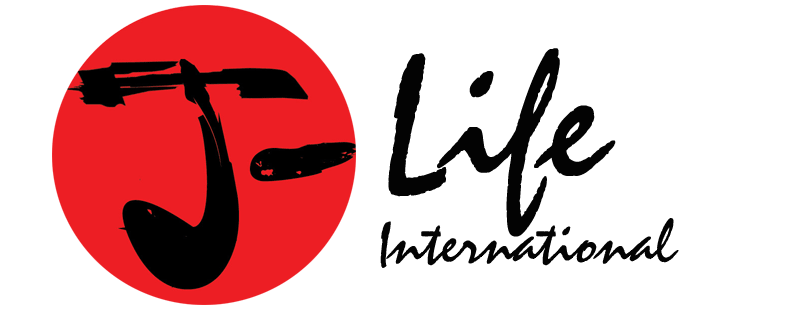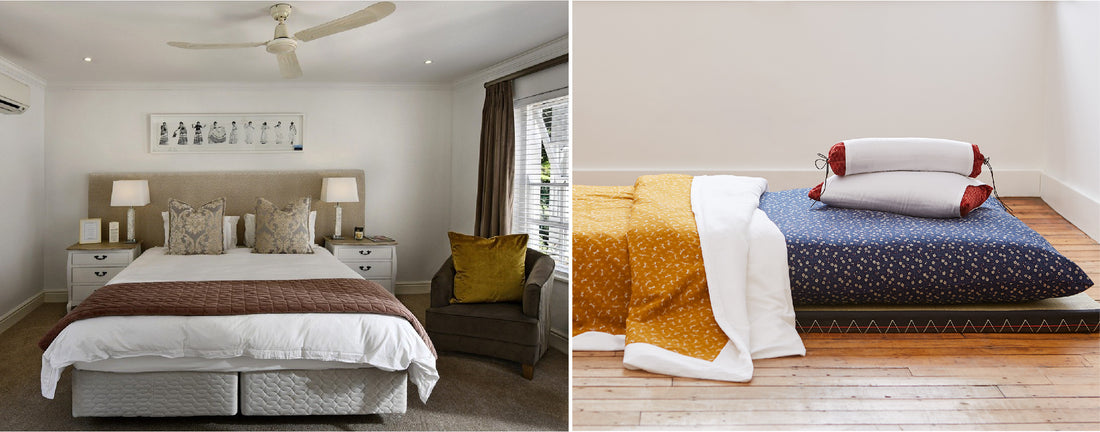The Japanese have a very different approach to architecture and interior design in comparison to the West. Due to the prominence of earthquakes, Japanese houses are built to come down and then be built back up very quickly. The walls are very thin and could be easily taken down with a sledgehammer. There are no basements, cellars, or attics, as most Japanese houses are built with three floors - unlike in the West. In the West - particularly North America, it is standard to have two main living floors with either a basement or attic attached - sometimes both.
In Japan, they also do not have conventional heating systems as in the West, but it is incredibly common for most houses to have air conditioning (which is almost the opposite of Europe and large parts of the United States).
Bedroom design and bedding, in particular, are no different. In the West, our beds are typically made up of innersprings, memory foam, or some type of latex. Most of our beds are very plush and mold to the shape of our bodies. While this is incredibly comfortable, it does not provide much support for our spines and can lead to chronic back, muscle, and neck pain.
The Japanese have a completely different approach to mattress design. In Japan, the beds are traditionally made with 100% cotton encased in a cotton cover. While you can easily find organic cotton Japanese mattresses, they are not exclusively organic. These mattresses are called shikibutons or shikifutons. The Japanese futons are much thinner than traditional Western mattresses and provide much more support. While the average Western mattress is between 8-14 inches thick, most authentic shikifutons range from only 3-5 inches. Furthermore, unlike the usual mattress cover, fitted and loose sheet combo, the Japanese have one cover, typically made of cotton, for their shikifutons.
Western Sleep Style

Japanese Sleep Style
Even the pillows used differ greatly between the two cultures. In Western culture, it is standard to have 2-4 pillows on a bed, commonly stuffed with polyester or down feathers. In Japan, they tend to use the more traditional soba gara makura which are pillows filled with fresh buckwheat hulls. Similar to shikifutons, these buckwheat hull pillows provide greater and more consistent support than the typical fiber-filled pillow.
The buckwheat hulls let the pillow conform to the shape of an individual’s neck and help to re-align our spines while we sleep. This makes them incredibly beneficial for anyone, but particularly those who struggle with chronic pain. They are, also, all natural!
For comforters, most people in the United States and parts of Europe use cotton or polyester. In Japan, their comforters are traditionally made with silk. Silk is beneficial for many reasons. It is naturally hypoallergenic so it is perfect for allergy sufferers. Similarly, silk is naturally inhospitable to dust mites. Silk also helps us naturally regulate our body temperature, so it is perfect bedding for all four seasons. These Japanese comforters are called kakefutons.
Lastly, another big difference between the two bedroom styles is layout. In Japan, the houses tend to be much smaller than, in particular, the United States. In the United States and much of Europe, the bedroom usually has a four-post, stationary bed with sheets, comforter, and pillows. The bed is meant to stay in place and does not move unless the occuoant decides it’s time for a redesign.
In Japan, it is completely different. Japanese futons are designed to be portable and easily put away for storage. It is incredibly common to store the futon during the day, only taking the bed and its counterparts out at night for sleeping. This is due to the fact that Japanese houses are typically smaller, so there is more consideration for how to use a space.







2 comments
I would like to purchase but I need to know how small a twin 4 inch would fold up. I need to store during day, pull out at night. Thank you
In the diagrams, the tatami mat(s) appear to be at least one inch thick. Do you sell these?